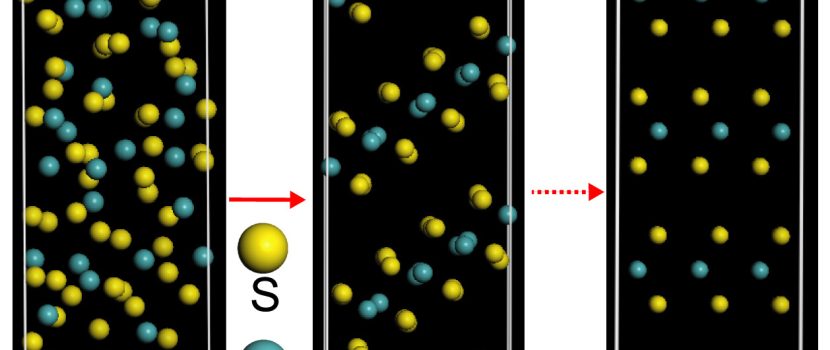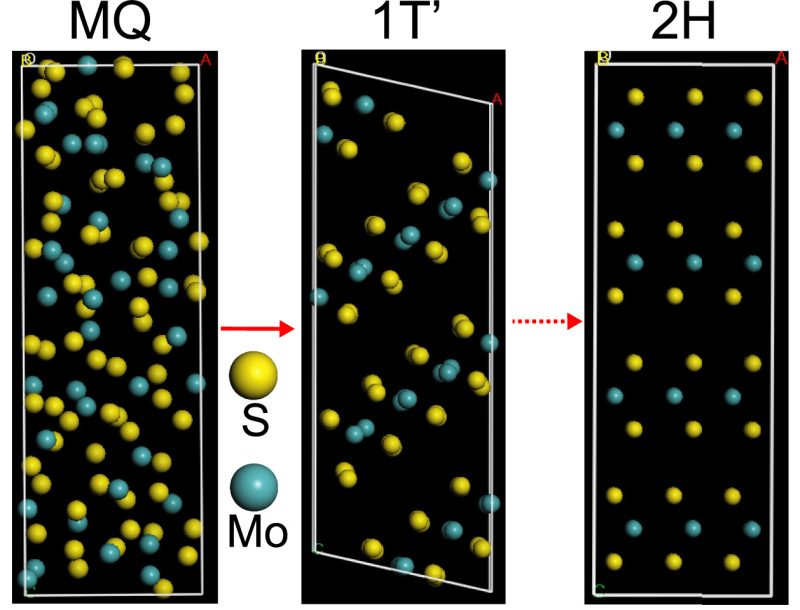
Invitation to a talk by Dr Krbal
FORMATION OF ORIENTED LAYERED TRANSITIONMETAL DICHALCOGENIDES
Dr Milos Krbal
Center of Materials and Nanotechnologies (CEMNAT), Faculty of Chemical Technology, University of Pardubice, Cs Legii Sq. 565, 530 02 Pardubice
Date: June 12, 2023
Time: 2.00−3.00 pm
Lecture hall: Seminar room 5.25 (Department of Environmental Chemistry & Technology), CPTO building
Two-dimensional (2D) transition metal dichalcogenides (TMDC) have been demonstrated to have powerful application potential [1]. In order to realize these aspirations, the synthesis of stoichiometric 2D TMDC on a large scale is crucial.
One growth process compatible with large-scale growth is the solid-state crystallization of thin amorphous layers [2], a process which avoids non-stoichiometric growth. Through a combination of experimental and ab-initio studies, we will present the local structure of as-deposited amorphous and crystalline TMDC phases and their impact on the optical and electrical properties. Since amorphous MoS2, for example, has strong absorption in NIR compared to the 2H phase, a light-heat conversion in the NIR therapeutic window uncovers the potential of amorphous MoS2 as an agent for photothermal therapy [3]. The crystallization mechanism, investigated using molecular dynamics simulations, reveals that the 1T´phase is an intermediate phase during crystallization from the amorphous to the 2H layered phase. Our results demonstrate the strong preferential crystal growth of TMDC layers along the c-axis as substantiated by the presence of the (200) Bragg reflection, which forms immediately upon heating the amorphous phase. It will be further shown that the ordering of quasi-two-dimensional TMDCs via solid-state crystallization can be improved by using an amorphous chalcogen-rich phase, where the gradual release of chalcogen promotes the stacking of covalently bonded triplets [4,5].
TMDCs growth over large areas can also be advantageously realized using 1D nanostructures with high aspect ratios, such as TiO2 or MoO3 nanotube layers. TMDCs can either be formed on nanotubes’ inner and outer surfaces under a chalcogen atmosphere at elevated temperatures [6-8] or the nanostructures can be coated with TMDCs by atomic layer deposition [9,10]. It will be presented that the TMDC/TiO2 nanotube heterostructures significantly improve photo-electrochemical and catalytic properties as well as exhibit extraordinary energy storage compared to the blank TiO2 nanotube layers.
Invitation by and questions to be addressed to Jiri Orava
References
[1] A.V. Kolobov, J. Tominaga, Two-dimensional Transition-Metal Dichalcogenides; Springer Series in
Materials Science, Springer International Publishing AG, (2016).
[2] M. Krbal et al. ACS Applied Nano Materials 4, 9, 8834 (2021).
[3] J. Mistrik et al. Nanoscale Advances 5, 2911-2920 (2023)
[4] M. Krbal et al. Crystal Growth & Design 22, 5, 3072 (2022).
[5] Y. Saito et al. Journal of Materials Chemistry C 10, 10627 (2022).
[6] M. Krbal et al. Applied Materials Today 17, 104-111 (2019).
[7] G. D. Salian et al. Applied Materials Today 16, 257-264 (2019).
[8] X. Zhou et al. Elektrochemistry Communications 82, 112, (2017).
[9] H. Sopha et al. FlatChem 17, 100130 (2019).
[10] M. Motola et al., Nanoscale 11, 23126-23131 (2019).
